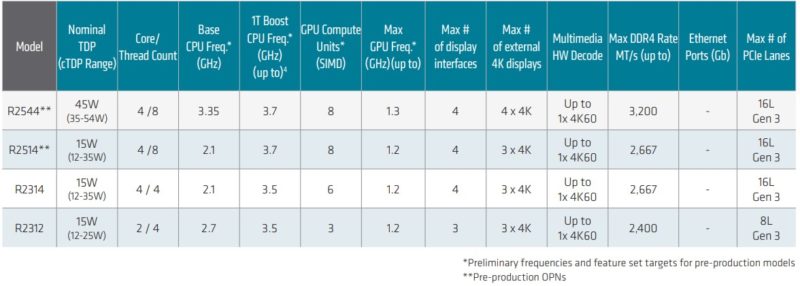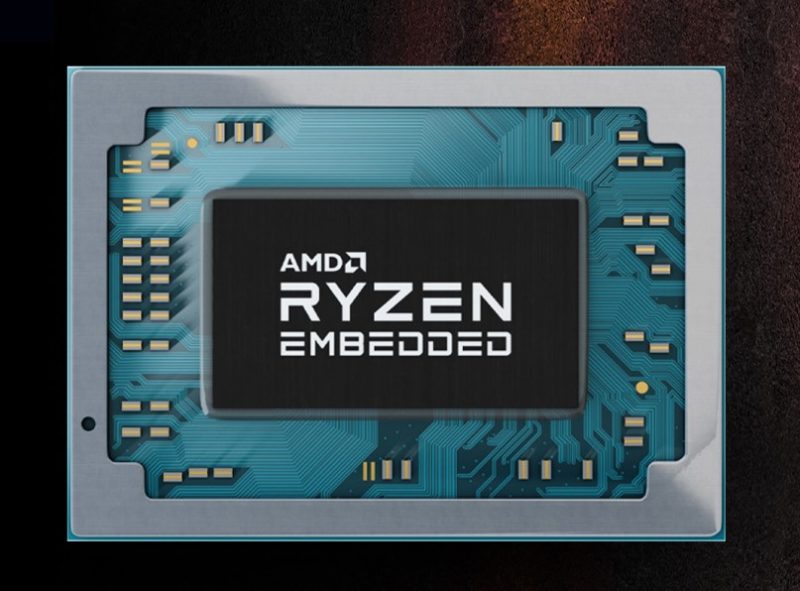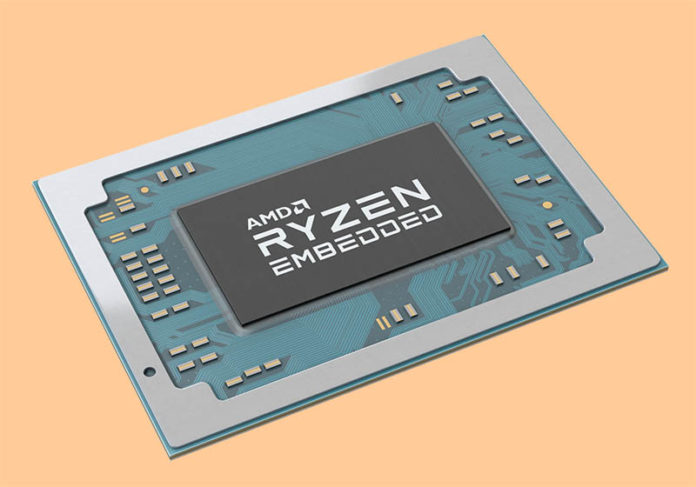This week at Embedded World, we have a new AMD embedded part. The new AMD Ryzen Embedded R2000 series combines Zen+ cores for low-power embedded SoCs. Zen+ is per the AMD release, and we confirmed this since there was another source in there citing Zen 2. We are going with the official release and AMD confirmation here.
AMD Ryzen Embedded R2000 SoCs Launched
The new R2000 series has a total of four new SKUs all with AMD GPU IP for 3-4 display outputs. These chips update the 2019 Ryzen R1000 series. The lowest end is the AMD R2312 which is a 2 core / 4 thread part that is already in production. This features only 8x PCIe Gen3 lanes and DDR4-2400.

Moving up the stack, the AMD R2314 has 4C/ 4T and adds another display interface, DDR4-2666, and 16 lanes of PCIe Gen 3. The AMD R2514 adds SMT for 4C/ 8T as well as slightly higher clock speeds. While the three lower-power SKUs default to 15W TDP and can go as low as 12W, there is a higher-power part as well. The AMD Ryzen Embedded R2544 is a 45W TDP part (configurable from 35W-54W) and adds higher clock speeds, faster memory support (DDR4-3200), and the ability to drive a fourth 4K display.

Both the AMD Ryzen R2314 and R2312 are in-production today. The R2544 and R2514 are expected to be in production starting in October 2022.
Final Words
AMD has had its embedded SoCs for some time and is making a combined push in the embedded market via a Xilinx and x86 roadmap. You can learn more in our AMD-Xilinx and AI Updates at AMD Financial Analyst Day 2022 and in the following video:
For those that read the above, and are wondering why Zen+, the embedded market typically has very long lifecycles. Also, there are some times when one simply needs cores with integrated GPUs to drive displays. AMD has been targeting those markets using its GPU IP and x86 cores. According to the roadmap, we saw a few weeks ago, we would expect AMD to have new parts in the coming quarters for the embedded space as it utilizes the combined AMD and Xilinx embedded portfolios.





AMD seems to be having a pretty rough time breaking into the embeded market (having great success everywhere else), but like you said most of these devices have very long lifecycles.
Do you think that some of the hardship they’ve faced is because of the shared architecture (with their standard desktop cpu cores) of their offering vs Intel having dedicated offerings (those Atom cores just now making their way into mainstream cpus)?
Or am I completely off on these/missing the point?
Amusing/unfortunate typo in last sentence of third paragraph.
When is AMD going to make a true Denverton competitor at 35w and under?
The V2000 series upgraded to Zen 2, so I would have expected the R2000 to follow suit. The published specs are also very thin, there’s e.g. no mention of what kind, or how many network interfaces there are.
Never forget the Process node that’s utilized to diffuse these APUs and that’s going to be GF’s 12nm, or maybe 12nm+, node and really that’s got to be less costly for embedded usage for Wafer costs. Maybe the tech press should be asking for more info besides what’s provided in the marketing slides/materials like has the Video encode/decode been updated to a newer version or is this all the same as the Ryzen 3000 series Branded Zem+ APUs that where released years ago. I have a laptop that has the Ryzen 5 3550H(Vega 8 Integrated Graphics) and this part(45W Part) appears to be that but using Ryzen R2000 series branding. But has AMD enabled some Ryzen Pro like features for these Embedded parts.
AMD’s ROCm/HIP software stack, that’s supposed to be serving as AMD’s equivalent to Intel’s OneAPI, How well is that supported on the Vega Integrated Graphics? The Tech Press is just not considering AMD’s Software/Driver/API support on these and other generation APUs with Integrated graphics but the hardware is worthless without Driver/API ecosystem support and that’s got to be supporting the latest there so ROCm/HIP support on AMD’s integrated Vega graphics(Used across 5 generations of Ryzen APUs of all end mart usage, Consumer, Pro/Embedded) what’s that ROCm/HIP support level currently.
@asdf Looks like dual 10GbE is still an option on the V2000 series. The reality with the V1000 series is it was almost never used. One of the few examples I can think of taking advantage of it on the V1000 series was Deciso B.V.’s Netboard A10 Gen3 for their OPNSense appliances — I know this only because I have their DEC750 router appliance (2700 series are the rackmount version) which has dual SFP+ and three 1GbE ports. Fantastic 10GbE router that idles at ~8W and can shove nearly 2Gbps of IPSec (or 10Gbps unencrypted WAN traffic) at only 16-17W.